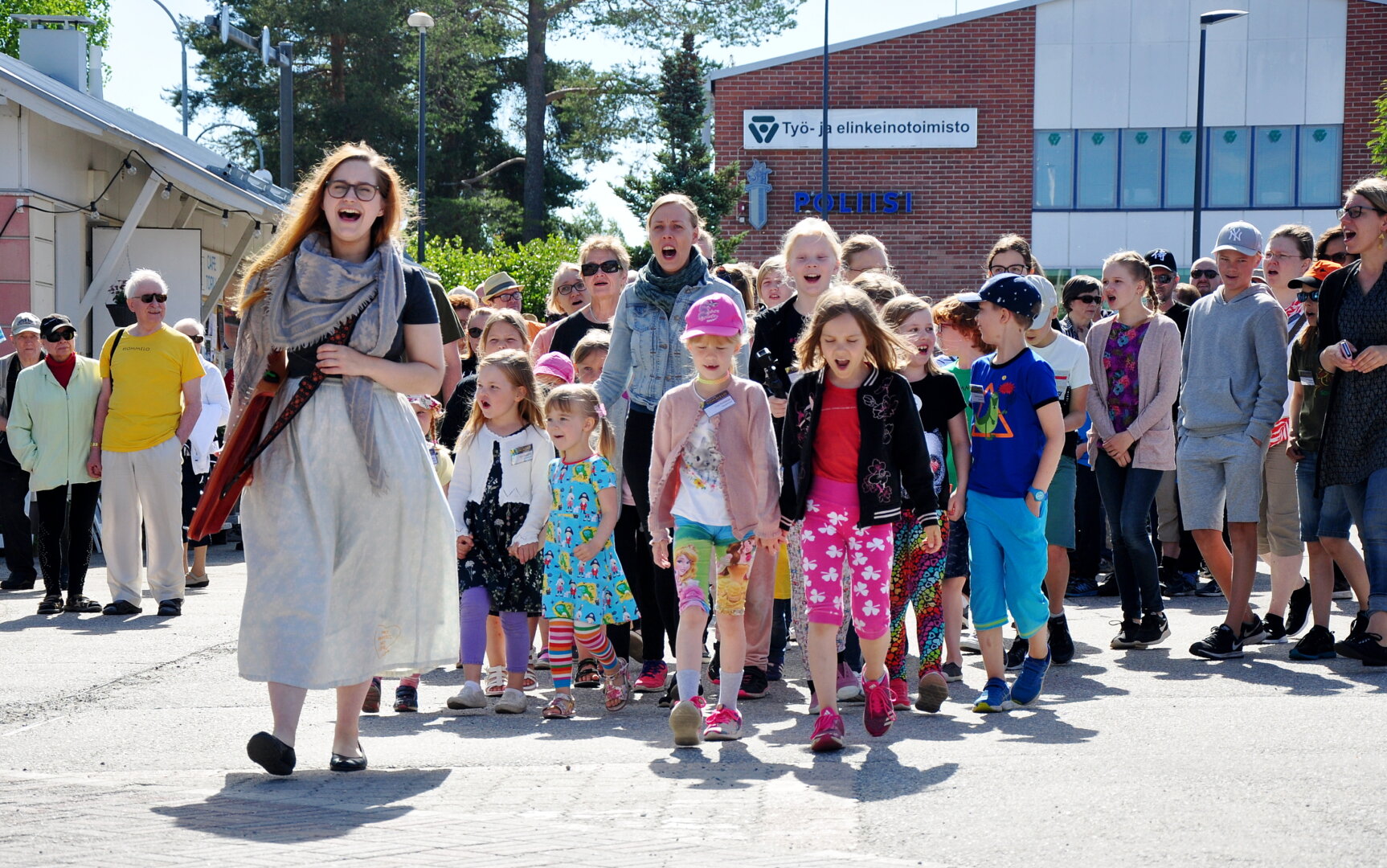Finnish town Kuhmo selected as Finno-Ugric Capital of Culture 2023
28.1.2022

On 27 January, an international five–member jury selected Kuhmo, a town in Finland’s
Kainuu County and a UNESCO Creative City of Literature, as the next Finno–Ugric Capital of
Culture. This marks the first time that the Finno–Ugric Capital of Culture will be located in
Finland. Kuhmo expects the title to boost cultural tourism in the region and to support the
preservation and revitalization of languages and cultural heritage across the wider Finno–
Ugric world.
Key objectives of Kuhmo’s 2023 programme include awareness–raising of Finno–Ugric
languages and cultures in Finland and worldwide, to support the revitalization of indigenous
Finno–Ugric languages and to promote the rich music heritage of Finno–Ugric peoples.
Kuhmo is planning to hold over 100 activities as part of the Finno–Ugric Capital of Culture
2023 programme, with the Ethno Music festival Sommelo as the flagship event of the year
(26 June – 3 July). Other high–profile events include Kuhmo Culture Celebrates Winter
festival, a conference on indigenous Finno–Ugric languages, “On The Trails of the Big Bear”,
an event exploring the role and meanings of bear in Finno–Ugric cultures, the internationally
acclaimed Kuhmo Chamber Music festival and a conference on Finno–Ugric singing cultures.
Key organisations behind Kuhmo’s winning bid were Runosong Academy as the main
applicant, as well as Juminkeko and the Town of Kuhmo.
In the words of the chair of the five–member jury Käbi Laan (Youth Association of Finno–
Ugric Peoples), Kuhmo’s bid stood out over its competitor – Estonian town of Iisaku – by a
versatile programme of traditional festivals and other events that will be successfully
integrated with the Finno–Ugric theme. Jury member Rune Bjerkli (Kven Finnish Association)
highlighted the key role of runosong and traditional music in Kuhmo’s bid: “In 2023, Kuhmo
will serve as the true musical epicentre of the Finno–Ugric world”. According to jury member
Niko Partanen (Sukukansojen Ystävät ry (Finland)), “It is historic to get the Finno–Ugric
capital of culture to Finland, and Kuhmo demonstrated that it was well prepared for this
challenge. This is also a great opportunity for all of us working with Finno–Ugric cultures in
Finland.”
Kuhmo’s mayor Tytti Määttä expects the Finno–Ugric Capital of Culture title to boost
cultural tourism in Kuhmo and the surrounding region, “The theme of Finno–Ugric culture
suits us perfectly, because we already have many elements in Kuhmo devoted to this
direction. We expect to grow our tourism revenues, and at the same time, strengthen our
cultural operators.” And according to Pekka Huttu–Hiltunen (Runosong Academy), Kuhmo
can offer much to the wider Finno–Ugric world, “For instance Juminkeko has been operation
succesfully for more than 30 years in revitalising Karelian culture and preserving the
heritage, both in Finland and Karelian republic. Also Runsong Academy and other cultural
organisations can add their contacts and contribution to the Finno–Ugric world. This means
support for preserving the languages and cultural heritage by organising research
oportunities, artistic events and communication between activists.“
ABOUT KUHMO
Kuhmo, a town of some 8 000 inhabitants, lies by a beautiful waterway, in the Eastern part
of Oulu region in Finland. Kuhmo is a pioneer both in using renewable energy and timber
construction development. The strengths of Kuhmo lie in timber, the boreal wilderness, and
culture.
The oldest unaltered state border line in Europe lies in Kuhmo, between Finland and Russia.
Despite the past periods of conflicts and tumult, the connection between the people of
Finland and Viena Karelia has not been broken. Elias Lönnrot’s folklore collecting
expeditions to the Karelian grounds are the most well–known example of this connection.
Lönnrot elaborated the yield of his expeditions, the epic folklore materials, into the national
epic Kalevala in Kuhmo, and even today trips are organised to those “runosong villages” of
Viena Karelia. Juminkeko is an information centre for the Kalevala epic.
The nature and cultural heritage of Kuhmo have played a key role in the development and
entrenchment of the Kuhmo Chamber Music Festival and the Ethno Music Festival Sommelo
here. The Kuhmo Arts Centre offers excellent facilities for these events.
ABOUT FINNO–UGRIC CAPITALS OF CULTURE
Established in 2013, the programme of Finno–Ugric Capitals of Culture is a flagship initiative
of Youth Association of Finno–Ugric Peoples (MAFUN) and URALIC Centre that aims to raise
awareness of Finno–Ugric and Samoyedic peoples as well as Uralic languages, to strengthen
collective Finno–Ugric identity and to stimulate sustainable local development in different
corners of the Finno–Ugric world.
To date, the title of Finno–Ugric Capital of Culture has been awarded to nine villages or
cities: Udmurtian village Bygy (2014), Seto village Obinitsa (2015), Hungarian village
Iszkaszentgyörgy and City of Veszprém (2016), Karelian village Vuokkiniemi (2017), Mari
village Shorunzha (2019), Mari–speaking village Mishkan in Bashkortostan (2020), town of
Abja–Paluoja in Estonia (2021) and Bayterek village in Udmurtia 2022).
Contact: Oliver Loode (oliver.loode@uralic.org, Tel. +372 513 2992)

